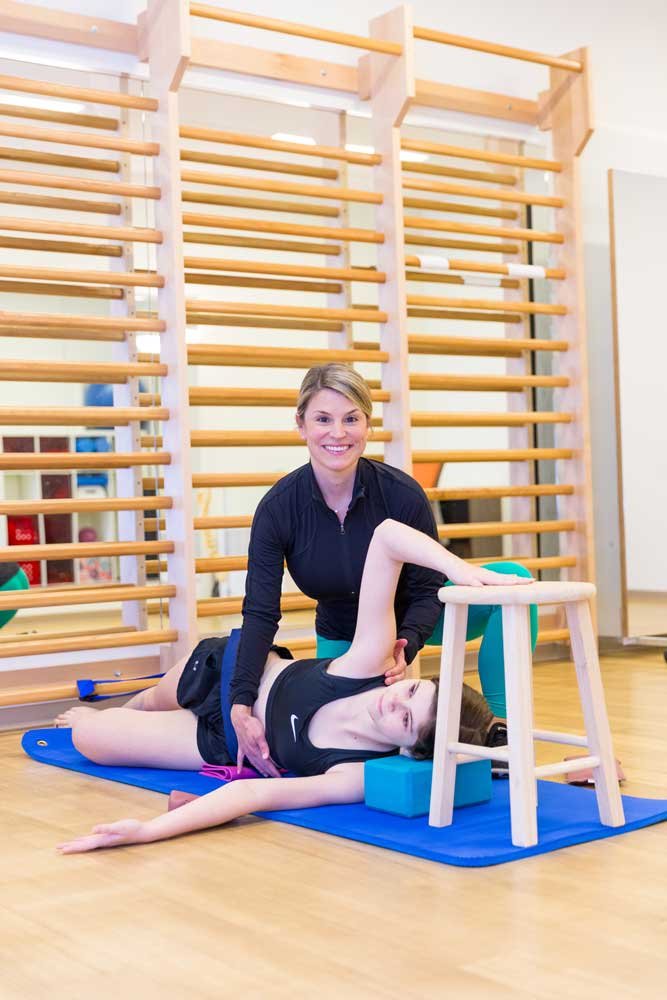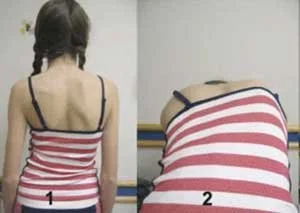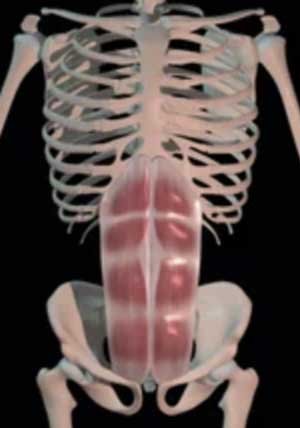The Core and Scoliosis
I often hear patients lament about their lack of core strength, and attribute this to “not doing enough crunches”. Why is a crunch the first exercise we think of when we think of the core? Possibly because crunches were often included in fitness testing in childhood, and a staple of athletic and military training. Nevermind the appeal of a 6 or 8-pack to show off at the beach(!) However, the crunch is not advised for those with scoliosis, which we will detail later in this post. There are many options for core exercises that avoid the crunch-like motion.
Let’s back up a moment to discuss why core strengthening is important in the first place. If you are a teenager currently wearing a brace for 18-20 hours/day, the brace is taking the job of your core muscles while you’re wearing it. Over time, this can cause the core to become atrophied, or weakened. Taking time out of the brace to activate your core muscles, whether during a sport or a specific core routine, is imperative!
If you are an adult with scoliosis, especially in the thoracolumbar or lumbar spine, a strong core is your best shot at avoiding serious joint and disc degeneration in this area over the lifespan.
Truly, for any body, core strength is a must. The anatomy of the lumbar spine (low back) makes it vulnerable. It is not nearly as stable an area as the thoracic spine, which has ribs on either side of the vertebra providing built-in stability. Just a glance at the graphic below will show you the difference in the thoracic versus the lumbar spine – note how the lumbar spine is pretty much floating in space – and begging for some stability! Enter the core muscles…
Spinal Anatomy
Back to our original query, why no crunches for those with scoliosis? When an individual with scoliosis rounds forward, such as in the Adams Forward Bending Test, the scoliosis “worsens”, as the vertebra twist and bend laterally more with spinal flexion/forward bending.
Adams Forward Bend Test
Because crunches involve this very motion (flexion of the spine), and we know flexion makes the deviations of scoliosis more pronounced, it makes sense that those with scoliosis should choose a different core exercise. Neutral spinal positioning is best, or in simpler terms, keeping the spine long.
Let’s break down the core into its many muscular components, beyond the 6-pack muscle, a.k.a. the rectus abdominis. This 6-pack muscle is responsible for the spinal flexion motion (e.g. crunch), but plays only a small role in the actual stability of the lumbar spine.
Rectus Abdominis
The core consists of many layers of muscle, the deepest layer being the transversus abdominis, our inner corset.
Transversus Abdominis
This is arguably the most important of our core muscles, as it provides a great deal of internal stabilization. Weight-lifting belts, seen on power-lifters and on the average Home Depot employee, mimic this muscle. That population likely needs the external support while lifting heavy loads, but they have the exact same musculature inside their abdomen, as we all do.
We also have these wonderful internal and external oblique muscles, which when toned, can be seen on the outer part of the abdominal wall. These muscles provide lateral stability. Think of these muscles as your “side plank muscles”.
Obliques
Accessory core muscles include the diaphragm, the primary muscle of inspiration, the pelvic floor muscles, and the lumbar multifidi muscles.
True core strengthening is done not in a position of spinal flexion, but in a position of spinal neutral, where our inner corset, the transversus abdominis, is optimally active.
So the answer to the big question: what core exercises should I do if I have scoliosis? Dead bug, bird dog, side plank, and primal push-up, just to name a few. The options are truly endless.
Bird Dog Stretch
Side Plank on Knees
Dead Bug
Primal Push Up
All of the above exercises can and should be modified to fit the individual. Starting with the most difficult variation of an exercise is impractical for some – loss of spinal neutral will negate the purpose of the exercise. Conversely, spending time doing an exercise that is too easy for you is also not helpful. We should be appropriately challenging our muscles with all exercise.
If you’re curious about what core exercises are right for you, we welcome you to our clinic to learn about your body and receive a customized core program; it’s what we love to do!










